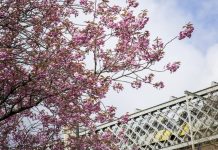The disease that has been destroying England’s ash trees has arrived in Greater Manchester.
The publication of updated maps from the Forestry Commission has confirmed a significant new spread of ash dieback to several locations across Northern England.
A number of new ‘wider environment’ locations have been confirmed as having the disease in Lancashire, Greater Manchester and West Yorkshire, one of which is the Woodland Trust’s Greendale Wood near Grindleton in Lancashire.
As of 6 October 851 locations have been confirmed as having ash dieback, over half of which are in the wider environment.
Chalara dieback of ash, also known as ash dieback, is a serious disease of ash trees caused by a fungus called Chalara fraxinea (C. fraxinea), including its sexual stage, Hymenoscyphus pseudoalbidus (H. pseudoalbidus).
The disease causes leaf loss and crown dieback in affected trees, and is usually fatal.
Chalara dieback of ash has potential to cause significant damage among the UK’s ash population. It has caused widespread damage to ash populations in continental Europe, including estimated losses of between 60 and 90 per cent of Denmark’s ash trees.
Experience in other parts of Europe indicates that it can kill young ash trees very quickly (within one growing season of symptoms becoming visible) while older trees tend to resist it for some time until prolonged exposure, or another pest or pathogen attacking them in their weakened state, eventually causes them to succumb.
It appears the infection in Lancashire is extensive both in area and the number of trees infected, with the disease well established in the wider environment.
Around 20-40 young ash trees at the Woodland Trust’s Greendale Wood are showing signs of infection and several hundred were planted in the wood, which was created in the year 2000.
Woodland Trust Director of Conservation and External Affairs Austin Brady, said: “It’s of huge concern to see these cases of ash dieback confirmed in the North West. We must continue to explore all the possibilities which may provide a future for our ash trees.
“The impacts of the disease in the short term are becoming clearer, though we have yet to see how much natural resistance exists within our native ash population. We hope an increase in regeneration of other species can help us build diversity and resilience into our natural landscapes, to enable our natural habitats to cope with all the challenges they face, which will help them recover if any pest or disease strikes.”
Colin Riley, Woodland Trust Site Manager, added: “It is sad to have the disease confirmed at Greendale Wood which has developed, since it was planted by the local community in 2000, into well used local woodland.
“Our priorities are to ensure that woodland continues to develop across the site and as such we will be replacing the dead and dying ash at the wood with a range of native species. However the relative small number of ash trees at the site means there is no immediate threat to survival of this woodland as a whole”
Although it is hard to spot the disease in autumn the Trust is still asking the public to remain vigilant when visiting woods. Simple measures such as cleaning footwear in between visits can help prevent the spread of a number of tree diseases.
A statement from the Forestry commission says
Chalara has been confirmed in ash trees in parts of Lancashire and Greater Manchester. The symptoms of Chalara are more easily identifiable in the summer, so this degree of local occurrence is to be expected. We are continuing our surveys to monitor the disease, and offering management guidance to land and woodland owners.’







